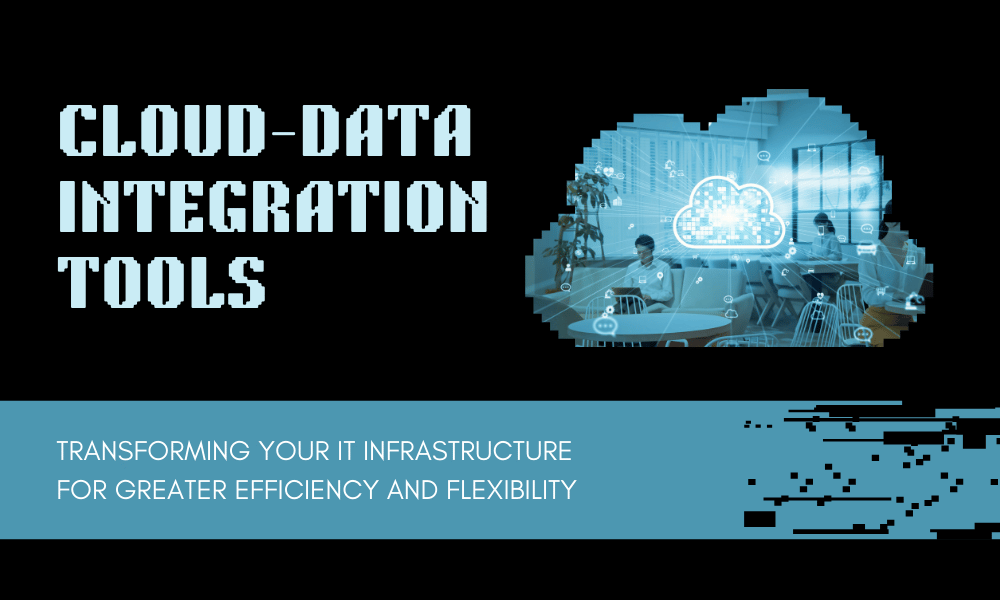Software data integration tools blend data from many different locations to give you better data oversight and real-time access. When you unify data, you have a single view of it and gain useful insights that enable better decision-making. Using cloud-based integration tools has many benefits including cost savings, less maintenance, and more scalability. Whether you’re a small business or a large enterprise, using cloud integration tools can make a significant difference to your data management. It helps in streamlining the business processes and making them much more effective than usual.
What are data integration tools?
Data integration tools gather and combine data from different sources into a single format. Dealing with data inconsistencies and data silos is critical for efficient integration. As a data engineer, IT professional, or business analyst you can use data integration tools for valuable data insights. The visual interfaces and zero-code environments of these tools make them accessible and easy to use even for individuals with little to no coding experience.
Data can be of any form. One of the most common forms is taking screenshots and videos on your phone and computer to store or share them as an important piece of data. Beyond cloud integration, you need to learn the best ways to collect, capture, share, and store common data that you generate on the go. Phone is the most used device in your daily work so knowing the tips and tricks on making it work effectively for you is important. While you’re exploring this article about cloud data integration tools, you might also be interested in learning how to film screen on iPhone. It’s an easy process that can be done in a few simple steps.
Screen recording on iPhone can help when you want to make tutorials, show features, or how to fix errors. On iOS 11 or later, there is a screen capture button with a dot and a circle in your iPhone’s Control Center. Tap the button to screen record iOS and you can add audio if you want to record a walkthrough tutorial. Editing is entirely in your hands so you can work around the screen recording the way you want to. This handy tip for your iPhone will make capturing important data in the form of screen recording easy like anything.
Why use cloud-based data integration tools?
As businesses generate so much data today, the cloud offers flexibility and scalability so you can store, process, and analyze large amounts of data. Your business will be more agile and adaptable to changing situations when you use the cloud.
Cloud services are also better suited to remote workforces and are usually equipped with strong security measures. Maintenance costs are lower and built-in features like data visualization help with running advanced analytics on large data sets. With cloud integration, you can create a unified, secure, and easily accessible storage system for all your data.
On the other hand, data security on physical devices is not as much as cloud. Given the increasing number of data theft cases worldwide and its wide reach, using cloud integration tools is the need of the hour. These tools offer data encryption, secure API gateways, multi-factor authentication, data loss prevention (DLP), and several other features that matter a lot which makes the tools the go-to choice for modern-day security-oriented businesses.
QuickBooks Cloud Hosting
Check out affordable QuickBooks cloud hosting by QB TECHS.
How data integration tools work
Data integration tools have connectors or adaptors. They link to various sources, such as databases and cloud applications. Setting up these connections allows you to extract structured data from databases and unstructured data from sensors. Web data integration includes integrating semi-structured data from web clicks.
Built-in transformation features allow for data manipulation and quality enhancement. You will merge, join, and normalize data in the transformation process and produce better results in collaboration with your team.
Data mapping involves matching data elements from various sources to corresponding fields in your central repository. This ensures that the data from various sources relates and integrates properly.
The tools will load data to the destination using various loading methods. These include real-time data streaming and batch processing. Through low latency and high throughput, handling even large volumes of data is made easy.
Many tools have data validation features. They verify the completeness and accuracy of the integrated data. You are able to set up your own validation rules. This may be necessary if you want the data to meet specific business rules or criteria.
Here are the top 5 tools you should consider for your business.
Dell Boomi
Boomi enterprise platform uses AI-driven integration and leverages the benefits of the cloud. It integrates cloud and on-premise applications, APIs, data, and AI agents. This enhances data trust and boosts productivity. Without the need for coding, you can work around it freely.
Key features:
- Integrate and automate data using generative AI.
- Deploy and manage APIs with ease.
- Use pre-built connectors to connect your applications and data.
- Get a synchronized 360-degree view of your data.
- Build apps and automate workflows without coding knowledge.
- Create real-time, event-driven integrations.
- Protect your data with industry-leading security measures.
Why choose this platform?
It’s the most popular option for businesses today. Boomi offers comprehensive data integration and a visual interface for designing data workflows. You not only have an overall view of data but real-time data monitoring capabilities and good security.
-
MuleSoft Anypoint Platform
Mulesoft Anypoint Platform can assist large companies with their complex integration requirements.
Key features:
- Facilitate the creation, deployment, and management of APIs.
- Get comprehensive integration for enterprise needs. This includes cloud, on-premises, and hybrid environments.
- Ensure data security with top security measures.
- Experience scalability as it handles large data volumes efficiently.
- Use many connectors and integration templates. These pre-built solutions speed up the integration process.
Why choose this platform?
If your business needs a secure, scalable integration solution with advanced API management capabilities, this is the right tool for you. The enterprise-grade features and tools make it one of the top integration tools available today.
Image Credit:Freepik
-
Fivetran
Fivetran is an automated data integration platform. It can synchronize data from cloud applications, databases, and event logs. Pre-built connectors, transformations, and analytics templates adapt as APIs and schemas change.
Key features:
- Pre-built connectors connect with a variety of data sources
- Analysis-ready schemas facilitate quick data analysis
- Pre-configured data structures simplify the data integration setup
- Real-time data synchronization
- Smooth flow of data to central repositories
- Easy deployment and scalability
- Top-class security features
Why use this platform?
Fivetran is beneficial for analysts who want to centralize data and receive insights from it but don’t want to have to spend time maintaining their own ETL systems or pipelines.
-
Talend
Talend is a popular big data and cloud integration software. It supports cloud and on-premise databases.
Key features:
- It integrates data quality, application integration, and data management in a single suite.
- As it is based on open-source technologies, it offers flexibility and innovations that are community-inspired.
- Self-service features allow business users to explore, clean, and prepare data for analysis.
- Built-in tools allow for good data governance.
- AI and machine learning capabilities allow for smart data quality and matching functionality.
Why use this platform?
The strength of this platform is the ability to handle complex data integrations. Its tools help to maintain data quality and compliance throughout the data lifecycle.
-
Matillion
Matillion offers a cloud-native data integration and transformation platform. It is built specifically for cloud data warehouses. The interface is user-friendly and allows technical and non-technical users to build and manage data pipelines.
Key features:
- Intuitive visual interface to build data workflows without the need for extensive coding skills
- Optimization for leading cloud data platforms, such as Google BigQuery, Amazon Redshift, and Snowflake.
- The ability to leverage the processing power of a cloud data warehouse for more cost-efficiency and better performance.
- A range of pre-built connectors for connecting to popular data sources.
- Data quality and governance tools to maintain data integrity and compliance.
Why use this platform?
What sets this platform apart is the ability to leverage the performance and scalability of cloud platforms. This enables businesses to transform big data volumes quickly and efficiently.
A final word
Businesses today generate data at breakneck speed and with AI being introduced in various functions, the need to produce, store, process, and share data is greater than ever. Also, the number of tools used to make business processes efficient is also big in number. As the volume of data increases, the need to quickly and accurately transform this data and integrate it keeps growing. This is where the cloud integration tools come in. One of the benefits of using data integration tools is that they solve problems such as bad data and mismatched data formats. Cleaning data and making sure it’s consistent is vital for seamless data management. Data management tools boost business intelligence and help you to make informed decisions. Your business will be more agile and able to keep up with market changes when you use cloud-based data integration tools.






Leave A Comment
You must be logged in to post a comment.